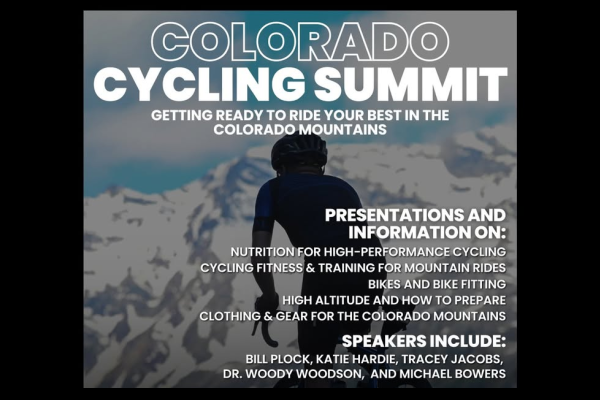
The First Colorado Cycling Summit
Cycling Season is here, and so is a long list of epic rides throughout the state and surrounding states. Are you ready? Join Avid Cyclist, and other co-hosts for the
Pete Butler is a lifelong cyclist from Tallahassee, Florida. He has been active on Zwift since it was in beta, and he continues to enjoy racing on the road and gravel. While doing a trail ride one afternoon, Pete and longtime friend Joanna Southerland-Mele crossed paths.
She shared stories about Supersapiens and demonstrated the value of Continuous Glucose Monitoring for endurance athletes. Coincidentally, her son is Supersapiens CEO and Founder Phil Southerland, who grew up in Tallahassee.
Through that interaction with Joanna, the founder invited Pete to take part in testing the product. He has been collecting data and gaining insights from Supersapiens since February 2022.

I am a person that loves data points. But, I recently heard Frank Overton at FasCat Coaching say, “When it comes to data, you want data that will provide trendlines and give you actionable information.”
With the tools most of us use, like Heart Rate Monitors, Power Meters, Cadence, Speed, real-time weather and wind tracking, sleep tracking, and all of the averages, lap times, or segment times available, we have the opportunity to see and track our progress. We can identify trends and push the ceiling higher. All of our traditional tools are really useful.
With Supersapiens and Continuous Glucose Monitoring, we are moving into a whole new realm of data points. I’ve heard it called bio-hacking, and I like that term. Sounds advanced. With Supersapiens, I get a real-time view into new data on how my body is performing.
I am only about 60 days into using the Supersapiens monitor, but I appreciate the new data points and insights. It’s also cool to be an early adopter. I work in technology, so I love new gadgets.
It hasn’t changed my cycling. I’m still doing what I do. There’s a lot of Zone 2 work, with a couple of days of intervals each week. Aside from having a new data field on my Garmin displaying real-time glucose info, it’s business as usual on the bike. The business of riding a bike hasn’t changed. We turn over the pedal. There are no extra gadgets required.
With Glucose monitoring, I’m not moving too quickly on making assumptions. I’ll preface this by saying that my coach, Christian Parrett, reworked my nutrition and fuel intake six years ago. He designed pre-race nutrition protocols, in-race protocols, and post-race recovery.
When I’m in a long race, we come up with the what and the when of nutrition and hydration. Thankfully, Christian nailed it for me, and if I do all the things, I am fueled and in a position to have a say in the results.
That said, whether I’m on Zwift or the road, I am now referencing the glucose trends. Interestingly, after a ride, Supersapiens gives you a score on glucose management. Supersapiens looks at how severe the peaks and valleys are (the slope again, a trendline) and gives you a score.
It is interesting because we learn that steep drops in glucose levels can result in fatigue, energy depletion, and loss of focus. The first month I was using Supersapiens, all my rides were on Zwift, and my scores were in the 40s or 50s. That’s out of a max score of 100.
It turns out that I learned that when I’m indoors, I don’t seem to focus on nutrition as well as when I’m outdoors. Over the last month, I have implemented my outdoor nutrition protocols, and my post-ride Glucose score is coming in the 80s and 90s. So that’s a change. I feel kinda dumb because I neglected this.
Lastly, I am now paying attention to the live glucose trendline when I ride. I’m not obsessing, but I’m watching it. I know what range my number should be based on the effort. I know when I’m on an upward rise or crashing on a downward slope. Now that I’m using EFS on every ride (my drink mix) and doing the right things while on Zwift, I see a smoother, more consistent, and predictable result.
It’s straightforward, but I have been in the technology business for three decades. So, being a geek is helpful with new apps. I have seen a lot of new apps and betas over the years, and the Supersapiens app is on point.
No crashes, it’s organized well, and it’s easy to find your way around. Every screen offers a help guide and information to tell you how to use it. So the app is grand.
There’s also the monitoring device that goes on your arm. That’s not hard, but I am admittedly a wuss. I literally am the guy who passes out at the doctor’s office when I see a needle. Thankfully, my wife had a career in the medical field, and she took care of placing the device on my arm. There’s a filament that goes into your skin. My wife is good. No blood and I don’t feel any pain.
It has. As I said, I wasn’t pre-fueling before my Zwift workouts. That has been positive. Also, I’m actively mindful of what I’m putting into my body with a data point. I admittedly eat like a middle school boy—Cheerios for breakfast, with peanut butter and jelly for lunch.
Now when I eat what I eat, I can see how it impacts my body. Funny, I had a 30th wedding anniversary recently and my wife and I had a super plush brunch—five courses with enough food to feed a high school basketball team.
My glucose went sky high. It was quite a sight. I’m not appalled by it. My body is doing what it’s supposed to do. It is pretty interesting to see it when it happens.
Good questions. The insights that happen off the bike are super helpful—two interesting examples.
One night, I woke up in the middle of the night. I wasn’t stressed about anything. The dog wasn’t restless, and I didn’t have to use the bathroom. Odd circumstances to be waking up.
For grins, I looked at my glucose reading. It turns out my glucose was super low, like low 40s. Not sure if you’d call that hypoglycemic, but it wasn’t good. I remembered that I didn’t eat the night before. I made a small bowl of oatmeal. My glucose leveled off. And I went back to bed and slept soundly.
I woke up early on a Friday and joined Matt Yankow’s Kiss at Base ride. It was the best endurance ride ever, and my glucose score was nearly 90. It was a perfect zone 2 ride, and my nutrition was spot on. An hour after the ride, I was hard at work and was working through a particularly stressful deal, and I was wound up tight.
I felt my body responding and was shocked to see that my glucose was over 200, which is the energy feed I’d need for a big sprint finish. The slope of my endurance ride was flat. My work experience created a huge spike. It’s weird, but again, I have to assume my body was doing what it was designed to do.

For me, when my glucose number is rising in a race, it is directly proportionate to my heart rate rising and my power output increasing. In that circumstance, it’s all interconnected. When my heart rate is 170, my glucose will rise and exceed 200.
However, my number also goes up when I eat, which is not necessarily connected to any of my other numbers. That is strictly impacted by what I’m consuming. A snicker bar will jack me up to 200 plus.
I’m looking for food that keeps me on a consistent trajectory. Paleobars, and peanut butter pretzels, tend to be good food. Most of us endurance racers are following a similar carb consumption model.
I can get the carbs from oatmeal cream pies, but my glucose gets jacked for a moment. So, as much as I love those, there are probably better things to intake.
My glucose numbers immediately settle into the recovery zone (70-120) after my ride is complete. After a ride, I like to get some carbs in the system, suitable for recovery. But I haven’t seen any anomalies. It seems like my body manages glucose quite well.
I put in a lot of volume. I don’t see much fluxation if I am managing nutrition well. Three meals a day. Mindful eating. Now, singular high volume efforts, like 3.5 hours or more. That’s different.
If you empty your glycogen store and aren’t fueling, it impacts your performance. For fun, I did a four-hour ride 100% fasted. I took in no carbs for the duration. I had four bottles of water with no drink mix.
In the last 15 minutes, I put in a 2 min max interval, and I was trashed. I average 329 watts, which is 5.4 w/kg. In comparison, I did a similar effort with nutrition and carb-loading and averaged just 6 w/kg.
So, the proof is in the pudding. Though, there is no pudding involved in my nutrition protocol.
I’ve learned a couple of things from Supersapiens:
Eat fiber, fat, and protein before carbs, and it will limit a glucose rush.
Include vinegar. So have a salad with a vinegar-based dressing before a high-carb meal. These eating tips reduce the intensity of glucose spikes.
You don’t want to be cutting corners. You have this monitor protruding from your arm. I can be a klutz, so I try to be careful. Oh, and by the way, I went through TSA with this on my arm. No problems whatsoever!
I love data. And the future for where this is going is enormous. Abbott labs make the device, and in January, they announced that they would be releasing a new version of the wearable that will also track ketones and lactate. Both will provide additional data points.
Ketones will signal you before you go into ketosis, meaning your body doesn’t have enough carbs to burn for energy. And with lactate tracking, you’ll see when your body is experiencing lactate buildup during exercise, which can hinder performance.
The only way to get the display on your Garmin is with your phone. Meaning, that if my phone dies or has a blip, the display field goes blank on the Garmin. It would be excellent if Garmin could connect the Bluetooth direct to the sensor.
On one long ride in south Georgia, I noticed that I was in an area with no phone signal, and my phone responded to the dead zone by clipping all my Bluetooth connections. It’s tech, so that sort of thing happens. I now know what to do to refresh and get my connection back on the Garmin display. But it took some fiddling.
If I didn’t have this data point, I wouldn’t have experienced any impact by the dead zone. Adding cool gizmos sometimes forces you to take your eyes off the prize.
Absolutely! Phil Southerland describes our bodies as these data-producing factories. Our ability to capture the data, harness the information, and take action can result in us going faster and achieving more things.
We all want to go faster. And if I am 58 years old and I’m going faster than 30-year-old Joy, she will probably want to know what I’m doing and have access to the same tools. That’s the nature of progress in the sport.
Also, it’s fair to say each of us is the target market. The world of endurance athletics wants to know more about bio-hacking, and they are absolutely willing to spend the money.
Christopher Schwenker, thezommunique.com

Cycling Season is here, and so is a long list of epic rides throughout the state and surrounding states. Are you ready? Join Avid Cyclist, and other co-hosts for the
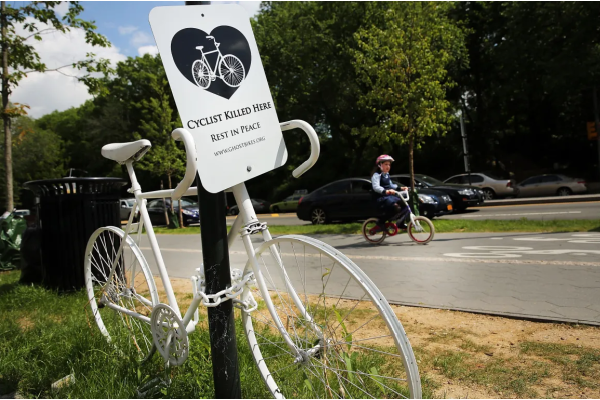
By: Brad Tucker I have been practicing law for over thirty-five years, the majority of which has included representing bicyclists who have been hit by drivers who disregarded the safety
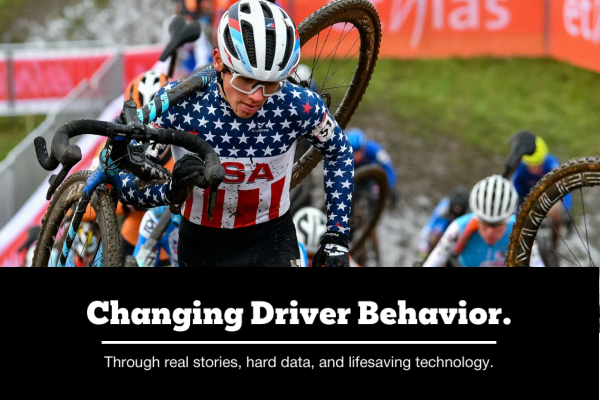
April 8, 2025 Propelled by the powerful stories of victim families, SB25-281 includes new mandatory chemical testing clause BOULDER, CO /ENDURANCE SPORTSWIRE/ – The White Line, founded in memory of 17-year-old
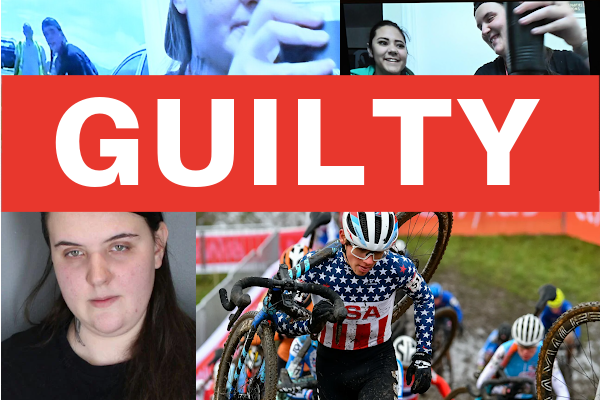
Boulder, Colorado- After a week long trial, late Friday evening, a Boulder County jury found Yeva Smilianska guilty of Vehicular Homicide-Reckless Driving in the death of Magnus White. The jury,
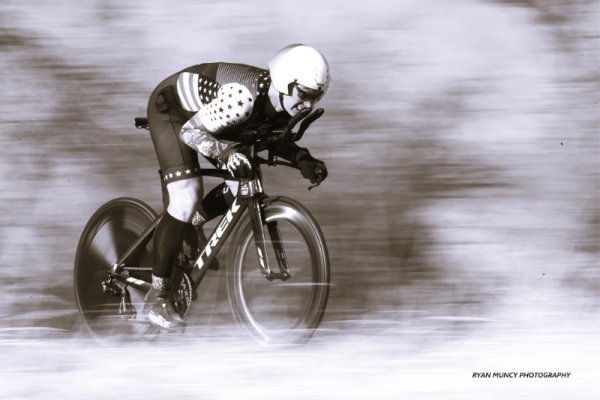
The 2025 Karen Hornbostel Memorial Time Trial Series p/b Cobras Cycling Team has entered its second week! Ryan Muncy of Ryan Muncy Photography was there to capture images of a chilly afternoon. Make
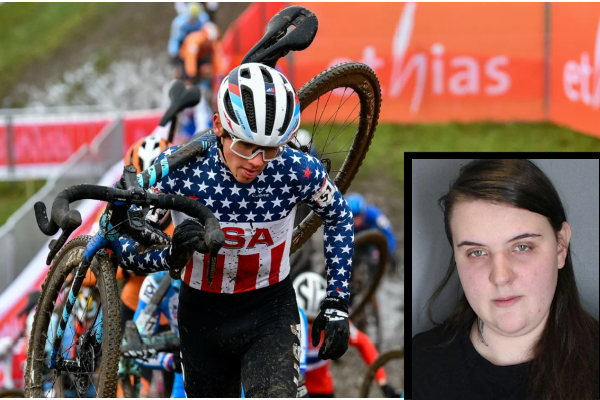
By: Gary Robinson, Avid Cyclist Jury selection began Monday morning for the suspect driver accused of striking and killing Colorado teen cyclist Magnus White near his home in Boulder. Yeva